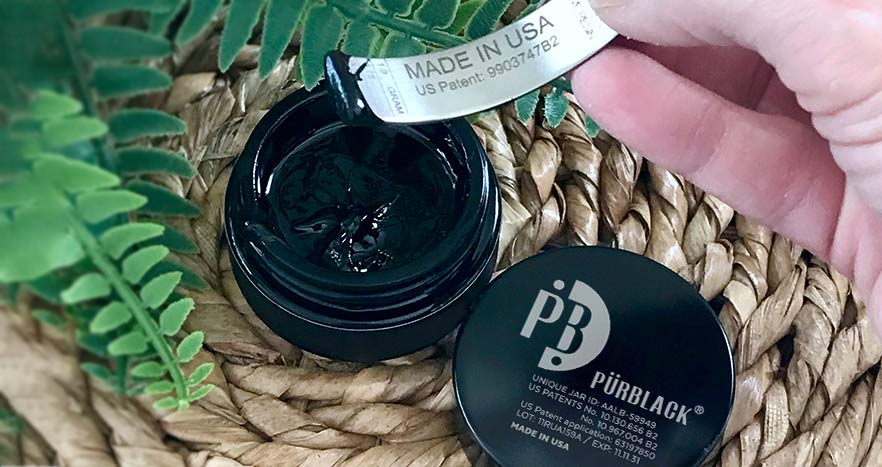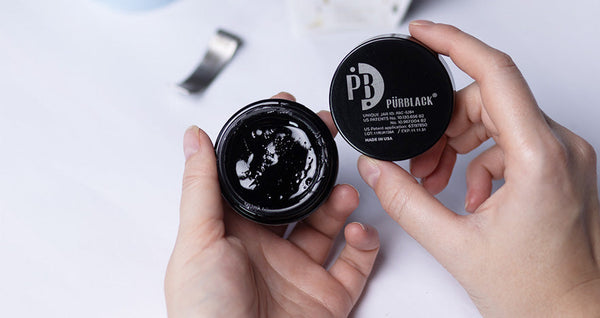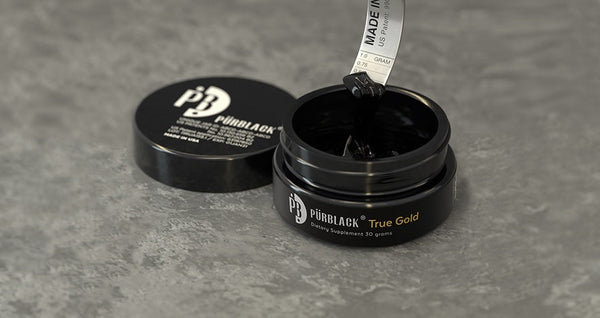
Shilajit, an organic material characterized as a resin. It is widely used in places around the Himalayas, Caucasus, Siberia. Shilajit is used as a food additive and as a rejuvenator in ayurvedic medicine. For centuries, people have turned to shilajit, also locally termed mumie or moomiyo, as a panacea for an endless lineup of ailments.<1> Today, shilajit is highly regarded for promoting overall health and wellness. Despite its long history of use, it is only recently that mumio or moomiyo, two other terms used for shilajit, has been more widely studied in-depth. Research into its components and alleged beneficial impacts to the body have been validated time and again. For this, it has become a favorite target of predatory entrepreneurs who proliferate unethical commercial practices that exploit unknowing consumers. The market today is replete with fake shilajit that mostly contain fillers. These are masked by presenting these in powders, tablets, and pills. Several brands labeled as fresh resin or soft resin are simply watered down. Many of which are made up of fulvic acid as the most abundant component. Fulvic acid is practically used as a fertilizer. Heavy metals, impurities, and harmful microorganisms find their way to the body and are bound to cause more harm than good.
Why are There So Many Fake Shilajit Products?
Majority of shilajit manufacturers are deliberately selling counterfeit products in the market. Many of these companies are also forced to fake it. That’s because shilajit is a finite resource and shortage of supply is a constant concern.
What is shilajit made of?

To better appreciate how rare shilajit is, you have to learn some facts about its origins and how it is formed. Shilajit can be found in very specific regions and different altitudes only. Shilajit is formed from decaying plants of medicinal value combined with environmental factors such as pressure and temperature. The product then undergoes years of humidification and fermentation before it oozes out of rocks. Shilajit cannot be grown. It can only be foraged from the crevices of rocks. Such rocks are found in very specific spots on earth. Shilajit must be formed under very specific conditions to exhibit health-giving qualities. Locations are often remote and have limited access. Shilajit taken across different regions will have comparable composition. Some will have richer amounts of a particular mineral such as calcium or magnesium over others. This variation is responsible for the different colors of mumie resin. This is also the reason behind a quality-based grading and classification system. In general, all of which are mostly made up of humic acid. Humic substances, including fulvic acid and ashless humic acids, are responsible for the health and wellness benefits often attributed to shilajit. Shilajit is made up of a rich combination of minerals in trace amounts. These have been associated closely with the rejuvenation of the mind, body, and spirit. For a more in-depth discussion about how shilajit-mumie came about, check out this post about the history of the mineral pitch.
The Complexity of Shilajit Production

It is not advisable for mumie to be ingested in its raw, unpurified state. That’s because the beneficial components of this black resin are intermingled with microorganisms, heavy metals, sand, and other materials that can cause adverse impacts to the body. There are two natural objectives for processing shilajit resin. First, the resin needs to be purified to make it safe for human consumption. Second, this process must ensure that the beneficial components of the raw shilajit resin stays intact. Very few shilajit makers exert any effort to meet both objectives. On the other hand, Pürblack strives to guarantee safety, purity, and efficacy all at the same time. Pürblack has been awarded two patents: US10130656B2 and US9903747B2. The first describes the detailed process of manufacturing Pürblack. It highlights how shilajit resin is collected, purified, fortified, and packaged. All while keeping its mineral components intact. The second patent is for creating a dispensing tool. This is used for scooping just the right amount of shilajit resin required to obtain its benefits. Different manufacturers employ different methods of processing shilajit. Although, most will involve some form of heating. Traditional methods use natural sunlight as the heat source. This traditional method is inherently laden with faults. First, traditional techniques produce inconsistent shilajit quality. Second, the process is unsustainable. Traditional methods are wasteful. These methods do not make use of technologies to derive the highest amount of pure and high- efficacy shilajit. Even fewer aim for the best quality beneficial for human consumption. We take pride in letting you know that we painstakingly pooled research, resources, and talent to bring you Pürblack. The result is pure, safe, and highly potent Live Resin.
The Treacherous Tricks of the Trade

Where substandard manufacturing practices fail to produce unquestionable product quality, a colorful marketing pitch often makes up for what the jar (or pill) lacks in the first place. It isn’t uncommon for products to pretend to be made of the “rarest” forms of shilajit. In fact, many of the products out there contain minute amounts of shilajit. Many are extracted from sedimentary rock formations which are substantially different from the shilajit bearing rock. It contains very low amounts of mineral pitch resin which naturally suffers the quality and potency of supplements that rely on it. Additives such as gums and clays may be mixed with the extract as well. This practice waters down the potency of the shilajit it contains. Despite this, makers label their products, “pure”. Some producers allegedly add cow’s urine to the mix for the product to embody the distinctive smell of natural, unadulterated shilajit.
Types of Fake Shilajit

It’s easy to spot fake shilajit simply by how it is delivered to the market. Shilajit pills, tablets, powders, and liquid tinctures are most definitely fake. Resin imitations, however, have made it to market. These resin-like forms present a new challenge in identifying authentic shilajit from fake shilajit. It cannot be stressed enough how important it is to buy authentic shilajit only. Of primary concern are safety issues and the extent of damage these products can do to your body. Many of these brands use fertilizers to mimic the humic and fulvic acid components of shilajit. This can be very dangerous and likely to cause irreversible damage to your health. The other concern is that these products do not deliver any benefit. Many advertise themselves to be infused with herbs associated with health benefits. Often, however, either there are no benefits that can be derived or there are some benefits that can be derived from the herbs but not from shilajit itself. There are three types of shilajit presentations that should immediately help you recognize that it’s fake:
Shilajit Powders and Tablets
It’s convenient. It takes out the uninviting taste and smell of shilajit in resin form. And, it’s fake! Powdered shilajit is a favorite product presentation among deceptive marketers. That’s because preparing shilajit powder requires only the cheapest processing technique. With the convenience of capsules and unsuspecting buyers, that translates to a huge markup and premium-level profit. Tablets are just pressed forms of powder. To keep it pressed and in shape, manufacturers add fillers. Sometimes even artificial flavors and colors are added as well to improve quality of appearance. It’s not unlikely that heavy metals can be used for this purpose too.
Herbal and Liquid Formulations

Shilajit is often mixed with herbs too. While combining with herbs may seem naturally rewarding, such formulations often draw on the beneficial properties of herbs. However, products presented in these forms fail to deliver the optimum quality and amount required to harness the benefits of shilajit.
Fake Resins
On initial presentation, substandard resins appear to be the real thing. Truth is, all these are either made of watered-down shilajit, burned sugar or honey, coal, charcoal, artificial colors, thickeners, or any combination of these. No matter how hard these manufacturers try to mimic authentic shilajit resin, you’ll know what to look for when you know how shilajit resin behaves:
- If it’s cold, it hardens. You can roll it between your fingers and form it into a ball.
- If it’s subjected to room temperature, shilajit is fluid and thick but not runny.
- Switch between warm and cold and you get the same results every time. Real shilajit resin will never solidify permanently when frozen.
- The nutrition facts label will never list any herbs, additives, preservatives, or even honey and other artificial ingredients. Pure shilajit is pure. That’s why unadulterated shilajit has an indefinite shelf life.
How to spot a fake shilajit resin?
- Look for inconsistencies against these four points.
- Sometimes, even the product labels giveaway these shortcomings. When you read, “shilajit drops” or “soft resin” you know you’re looking at a fake or substandard resin was cut with water or other liquid excipient.
- Check the nutrition facts label. If you see any other ingredients, including herbs such as ashwagandha, turmeric, and triphala or artificial flavorings, it isn’t really pure is it?
Let’s expand your know-how, so you can tell for sure if you’re dealing with a fake shilajit resin.
How to test Shilajit for Purity

By now, it should be absolutely clear to you that shilajit quality differs across several parameters. Quality and the resulting properties of the grade will generally bring about different results.<2> Most shilajit brands rely on traditional knowledge when sourcing their raw shilajit. Many market themselves as shilajit from the Himalayas, Mongolia, or some other region. Others advertise their products to be extracted from Gold or Silver shilajit. Gold grades allegedly carry the most powerful combination of trace minerals for restoring the body to optimal balance. The problem is, these claims are inherently faulty and are not based on science. Pürblack Live Resin uses raw shilajit sourced from multiple locations. Each sample is tested on-site and in the lab for specific parameters. Our experts use scientific tools and techniques <3> to ascertain that only shilajit that exhibits the ideal properties of highest quality makes it to each jar of Pürblack. You can read our patent to understand better how Purblack is made, and what makes it a superior form of shilajit. From now on, remember that real, beneficial shilajit may only exist in mineral pitch, resin form. Due to the growing sophistication of counterfeits, it is becoming more and more difficult to check product quality as well as to identify imitations. If you’re planning to supplement with shilajit, it is essential for you to know how to check the purity of the shilajit before taking it. After all, it’s for your own safety and health. Use the shilajit tests below to check for product authenticity.
Pliability Test
Pliability describes a property of matter where an object can be bent but not be easily broken. You can test the authenticity of your shilajit by observing this property. Store your shilajit resin in the freezer for about 2 to 3 hours. Then, take it out and allow it to adjust to room temperature for a few minutes. Take a small scoop and, using your fingers, roll it into a ball. Next, stretch it to form a stick then bend it.
Solubility Test
Solubility is the property of matter that describes how easily a substance dissolves in water. Authentic shilajit is 98% up to 100% soluble in water. Try scooping a small portion and drop it in a clear glass filled with water. Look for residues or non-soluble components settling at the bottom of your glass. If any component fails to mix completely with water, you’re dealing with a fake.
Burn Test
To perform this test, scoop out a small amount of resin. Place it on a non-flammable container such as a ceramic plate or a clay planter. Using a lighter, try to set it on fire. Shilajit does not burn. If the product you’re testing catches fire, that could be the coal, charcoal, fillers, and impurities that shilajit has been mixed with. However, keep in mind that if the product you’re testing does not burn, that might simply mean that the additives used are inflammable. In which case, it will be prudent to carry out the two other tests above.
About the quality of Pürblack
Pürblack Live Resin is extracted using a patented manufacturing process filed with the US Patent and Trademark Office in 2012. We closely screen our suppliers and take meticulous processes to ensure the purity of shilajit in every step of or supply chain. Every batch of shilajit that we process is referred to a third-party laboratory where it undergoes a series of tests that ensure purity, safety, and potency. Control numbers are printed on each jar of Pürblack to indicate the batch number that shows it passed our quality assurance tests. Our processes and the tests we do are well-documented. We can provide you with a Certificate of Analysis, a Certificate of Authenticity, and proof of source. Any legitimate seller of genuine shilajit should be able to provide you with these documents. Pürblack is the beautiful epitome in the marriage of art and science. If you have any questions about Pürblack or need more information about shilajit, we’d love to hear from you.
| How to Identify Original Shilajit That's Pure and Authentic | Description |
| Pliability | Melts in your hands, becoming gooey and sticky. Alternately, if you place it in the refrigerator to cool, it will become very hard and shatter like glass when struck with a hammer. If you try this, be sure to encase it in a plastic bag so you don't make a mess or lose bits of your valuable supplement! Pure shilajit will always hold its form and not separate into clumps. |
| Solubility | Dissolves in warm water or warm milk, creating a golden or reddish liquid. |
| Flame | Will not light on fire or burn like a candle. Heat shilajit with a mini blow torch. It will bubble and produce an ash that emanates outwards. But it WILL NOT BURN. |
| Form | Do not trust powder forms. Most powders on the market that have any shilajit at all contain between 2 and 30 percent. All powders have additives and fillers in them. Standardized extracts add fulvic acid, often the same used in fertilizer to create a standard percentage. No natural substance will have a standard percentage of anything! |
Reference
- Stohs SJ. “Safety and efficacy of shilajit (mumie, moomiyo)”. Phytother Res. 2014 Apr;28(4):475-9. doi: 10.1002/ptr.5018. Epub 2013 Jun 3. Accessed 18 Feb 2021.
- Khelebnikov A. “Characterization and Biological Activities of Humic Substances from Mumie”. J Agric Food Chem. 2003;51(18):5245-54. doi: 10.1021/jf021101e. Accessed 18 Feb 2021.
- Frolova LN, Kiseleva TL. “Chemical composition of mumijo and methods for determining its authenticity and quality (a review)”. Pharm Chem J. 1996;30:543–547.









